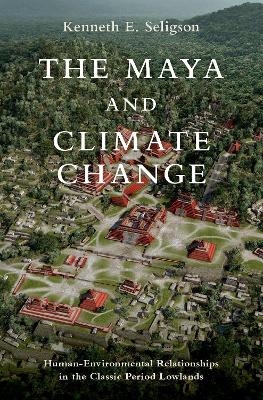
The Maya and Climate Change
Human-Environmental Relationships in the Classic Period Lowlands
Seiten
2023
Oxford University Press Inc (Verlag)
978-0-19-765292-3 (ISBN)
Oxford University Press Inc (Verlag)
978-0-19-765292-3 (ISBN)
The Classic Maya civilization, which thrived between 200-950 CE in eastern Mesoamerica, faced many environmental challenges, including those wrought by climate change. The ability of Maya communities to adapt their resource conservation practices played a crucial role in allowing them to survive for as long as they did. Researchers today understand that the breakdown of Classic Maya society was the result of many long-term processes. Yet the story that continues to grip the public imagination is that the Maya civilization mysteriously "collapsed". The Maya and Climate Change draws on archaeological, environmental, and historical datasets to provide a comprehensive, yet accessible, overview of Classic Maya human-environment relationships, including how communities addressed the challenges of climatic and demographic changes. It works to shift the focus from the Classic Maya "collapse" to the multiple examples of adaptive flexibility that allowed Pre-Colonial Maya communities to thrive in a challenging natural environment for over seven centuries.
Although the Classic Maya civilization did not leave behind much in the way of secret environmental knowledge for us to rediscover, one of the critical lessons that can be learned from studying the Classic Maya is the importance of socio-ecological adaptability--the ability and willingness to change cultural practices to address long-term challenges.
Although the Classic Maya civilization did not leave behind much in the way of secret environmental knowledge for us to rediscover, one of the critical lessons that can be learned from studying the Classic Maya is the importance of socio-ecological adaptability--the ability and willingness to change cultural practices to address long-term challenges.
Kenneth E. Seligson is Assistant Professor of Anthropology at California State University, Dominguez Hills.
Acknowledgments
Chapter 1: Shifting the Focus
Chapter 2: From Camera Lucida to Lidar: A Brief History of Maya Archaeology
Chapter 3: Forests
Chapter 4: Fields
Chapter 5: Water
Chapter 6: Stone
Chapter 7: Collapse and Resilience
Chapter 8: Looking Forward
References
| Erscheinungsdatum | 14.11.2022 |
|---|---|
| Reihe/Serie | Interdisciplinary Approaches to Premodern Societies and Environments |
| Verlagsort | New York |
| Sprache | englisch |
| Maße | 237 x 164 mm |
| Gewicht | 576 g |
| Themenwelt | Geschichte ► Allgemeine Geschichte ► Vor- und Frühgeschichte |
| Geisteswissenschaften ► Geschichte ► Regional- / Ländergeschichte | |
| Geschichte ► Teilgebiete der Geschichte ► Kulturgeschichte | |
| ISBN-10 | 0-19-765292-1 / 0197652921 |
| ISBN-13 | 978-0-19-765292-3 / 9780197652923 |
| Zustand | Neuware |
| Informationen gemäß Produktsicherheitsverordnung (GPSR) | |
| Haben Sie eine Frage zum Produkt? |
Mehr entdecken
aus dem Bereich
aus dem Bereich
Was Pompeji über uns erzählt
Buch | Hardcover (2023)
Propyläen (Verlag)
CHF 44,75
auf den Spuren der frühen Zivilisationen
Buch | Hardcover (2023)
C.H.Beck (Verlag)
CHF 27,95


